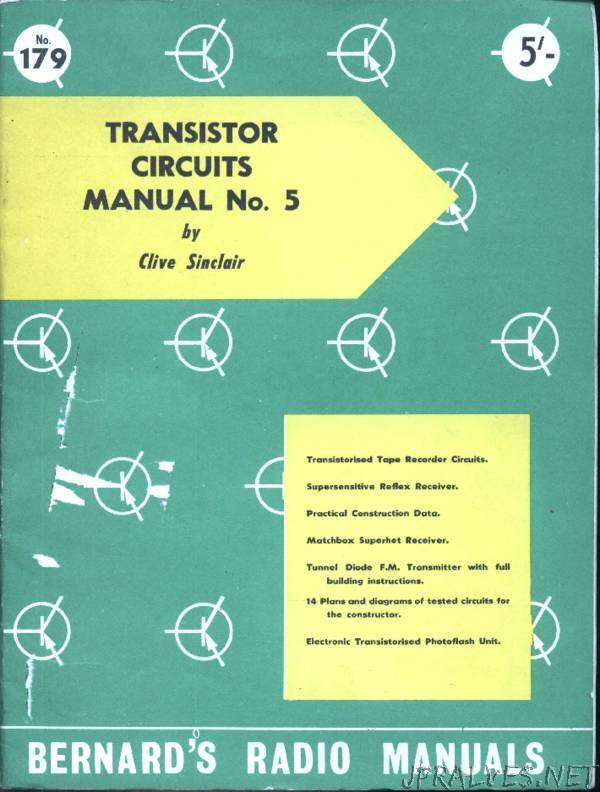
“The transistor circuits manual series has proved so popular that in
this, the fifth in the series, the page size has been doubled. This
makes it possible to give larger and clearer circuit diagrams than
before and it also means that only the very largest circuits have to be
split into two parts. The circuits included in this edition are those
which readers asked for most in their letters. A large part of the book
is devoted to tape recorder circuitry since this is a field now ripe
for transistorisation. The circuit for a complete record /playback
amplifier is included which will give a performance quite up to
professional standards unlike most of the transistor tape recorders on
the market at the moment. The amplifier was designed by G.E.C. and
readers who have built circuits designed by this company before will
know what excellent results they can expect. Readers have often asked
for the circuit of a high performance photoflash and one has been
included here. The design is a comprehensive one, again by G.E.C.,
which can be used for a wide range of tube sizes. Radio receivers have
always been, and still remain, the most popular constructional
projects. Four new circuits are given here. They will appeal to those
readers who are devoted to the construction of miniature sets. In the
past many of the tiny sets described have been severely lacking in
performance mainly because of the limitations imposed by the components
available. It has not been possible in the past to build a matchbox
sized superhet, for example, because the twin -gang tuning capacitors,
I.F. transformers and ferrite rod aerials on the market were far too
large. Now, at last, this has all changed; TSL can now supply a
complete range of subminiature superhet components, all precisely
matched to one another, which are the smallest in the world. These are
used in the circuits in this book and will provide a considerable
stimulus to the experimentally minded constructor. The last circuits in
the book are built around an amazingly new semiconductor device, the
tunnel diode. The circuits given are more experimental than those
usually included in these books because the tunnel diode is really
still a very new device. as it has not yet been applied in any large
numbers, not much circuitry experience has been built up. Most of the
development work so far done has been devoted to computer circuitry
since this is likely to be one of the biggest markets for the T.D’s.
Those readers who have not yet read about the tunnel diode, and there
will be many as remarkably little has been written, may well be asking
what is so interesting about this device. The most obvious advantage it
has over existing semiconductor components. such as the transistor, is
that it can amplify and oscillate at amazingly high frequencies. Tunnel
diode amplifiers have been made which operate at 5.000Mc /s and
oscillators have been built to work at twice this figure. Even the
ordinary commercial tunnel diodes which are now readily available have
cut-off frequencies of around 1,000Mc/s which compares very favourably
with the transistors available 7 years ago which had reached about the
same stage that the T.D. has now but which could only operate up to
about 10Mc / s. The oddest thing about the tunnel diode is that it has
only two terminals or electrodes. Its ability to amplify and oscillate
depends entirely on the fact that, between certain voltages, an
increase in the voltage applied across the diode results in a decrease
in the current flowing through it. In other words, the diode exhibits
negative resistance on part of its characteristic curve. It is mainly
because of this unusual means of obtaining amplification and
oscillation that the large scale use of the tunnel diode has been
delayed. Completely new techniques arc having to be evolved and
engineers are having to learn to think along new lines. The
possibilities are so exciting, however, that a great deal of work is
being done and the results are worth waiting for. It is hoped that
future Bernards publications will include an increasing number of
tunnel diode circuits as these components become cheaper to buy and as
experience is gained in their use.”
